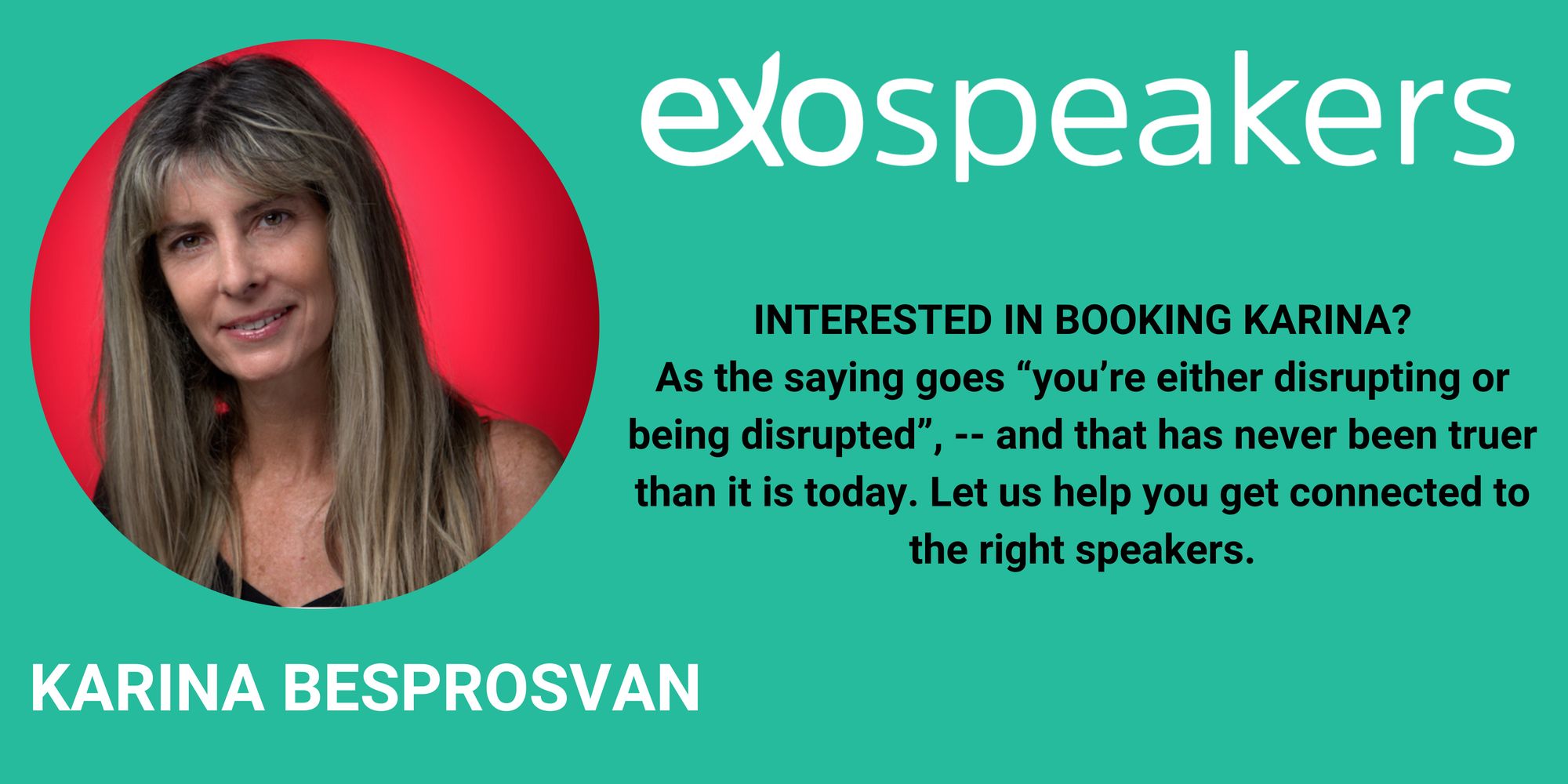
The Age of Adaptability: Are You Still Doing The Same As 10 Years Ago? Time to Move.
As platforms, formats, regulations, and the pandemic continue to evolve, ADAPTABILITY will continue to be the greatest asset in building an effective and resilient year.
We believe that, in order to succeed, in such a changing world, and grow alongside consumers, we must stop doing the same things we have been doing for the past 10 years.
As platforms, formats, regulations, and the pandemic continue to evolve, ADAPTABILITY will continue to be the greatest asset in building an effective and resilient year.
Here are 10 trends to complement with exponential thinking, some current marketing strategies, which will help us navigate and pilot more safely in 2022.
1. Technological privacy
Major tech brands are prioritizing privacy of consumer data privacy and data control is at the forefront of many people's attention, and tech brands are now fulfilling consumers' desire for privacy when it comes to your information. As a result, these companies are changing their policies and launching new initiatives to help ensure that this information is not unknowingly taken advantage of. Thanks to the work of activists and whistleblowers, consumers are now more aware of how their personal data is being exploited. These people are beginning to understand that many corporations are subtly tracking their interactions, movements, and interests as a means of production.
2. Micro-Videos
The rise of TikTok during the pandemic was widely reported. In the first quarter of 2020, TikTok received 315 million downloads, that is, more quarterly downloads than any app in history, but it remains to be seen whether TikTok maintains dominance in the micro-video market. After all, Instagram usurped Snapchat in Stories, so will the platform outshine TikTok in Reels? Time will tell, but the first few metrics are promising. 87% of Gen-Z TikTok users agree that Reels is very similar to TikTok. Reels also receive 22% more engagement than regular video content. Instagram Reels isn't the only micro-video format that is set to grow in 2022. Take YouTube Shorts, a short-form video experience launched by Google in 2020, for example.YouTube: Brands that capitalize on this micro-video trend, and the format seemingly favored by algorithms, will win in 2022.
3. Metaverse expansion
Tech brands are investing in developing and perfecting metaverse experiences. The term "metaverse" refers to a virtual reality space in which users can interact with a computer-generated environment, as well as with each other. Tech companies are competing to develop the potential of these digital spaces, with an emphasis on social life, culture, and brand presence. The incredible speed at which technology evolves is resulting in a rebound in digital services, both related to aesthetic and functional experiences. Guided by curiosity, enthusiasm, and the desire to be entertained, many people spend more and more time on the Internet. Whether it is to develop your personal brand, business project, socialization, or game.
4. eSports
By the end of 2021, the global eSports audience is projected to reach 474 million users, with revenue of nearly $ 1.1 billion. Esports are on the rise, but they are still in their infancy, which means a great opportunity for those who do it well. Verizon is well known for being avant-garde in its digital marketing, and eSports are no exception. In 2020, Verizon became an official partner of the League of Legends regional league and earlier this year Verizon and video game developer Riot Games expanded this partnership and Verizon became a partner of the League of Legends' three annual global events. Legend. With pandemic-related regulations evolving on face-to-face sporting events and large venues, 2022 could be the year that esports adoption and sponsorships go mainstream.
5. Comfort commercials
Advertising campaigns adopt more positive and relaxing themes. As the world gradually removes restrictions related to the pandemic, brands increasingly prioritize “wellness” to help alleviate persistent anxiety in people. This includes advertising campaigns that focus on comforting and relaxing topics that offer a more positive outlook for the future than has been seen in the last year. Consumer stress has been at an all-time high in recent months, and everything from social restrictions to financial upheaval has had an impact on most people in North America. As people gradually get used to life returning to "normal", they look for brands that help them move forward in that process, either on an emotional level,
6. A new economy: from digital payment, to social payment, to digital collections or NFTs
The more time users spend digital, the more money they spend digital. Person-to-person payments had promising growth before the pandemic and COVID-19 ignited and accelerated this trajectory. In 2020, PayPal's payment volume growth was up a record 31% and that won't slow down anytime soon. PayPal projects a similar increase, of around 30%, in 2021. And it is not just PayPal, payments and social networks continue to converge through the rise of other platforms such as Venmo and Zelle. In the third quarter of 2021, Zelle processed $ 127 billion in 466 million transactions. Large corporations, small businesses, and everyday users rely more on digital payments for everything from buying a car to paying a friend for lunch.
7. Non-fungible tokens and digital collectibles.
The blockchain boom enables digital tokens that are likely unique and rare. As a result, digital collectibles are now a growing feature of eSports, online gaming, and social media. These unique tokens have a variety of applications, from personal expression to trading and investing. As more aspects of our lives come online, the demand for symbols of digital status and personal expression will increase. Digital collectibles will be portable from platform to platform, allowing people to create a complete picture of their digital selves no matter where they exist online. Digital collectibles already include personal tokens, which allow people to tokenize their time,
8. Support for Startups
Brands are launching initiatives to support startups amid COVID. - Brands in various sectors ranging from finance to technology aim to support new business development during and after COVID. These initiatives include banking tools, credit cards, and technology support. North American economies have suffered a substantial impact in light of the ongoing pandemic, and startups lack the financial support necessary to succeed in the uncertain business landscape. This is partly due to a lack of consumer demand, as shoppers shift their spending to more essential items like food and clothing and less to luxury items like travel or dining. Brands with a B2B focus are supporting these companies,
9. Voice search
Smart speakers posted record growth in 2020, with more than 150 million units sold worldwide. Voice search is set to continue to grow for years to come. Why? The main reasons are intuitive: it's easy and hands-free. 71 percent of consumers prefer voice search to search by type. Voice purchases are projected to reach $ 40 billion in 2022 and by 2024, there are projected to be 8.4 billion voice devices worldwide. It is true that there are technological limitations with voice search, which relies on natural language processing, but even so, Google's speech recognition has a 95% accuracy rate for English searches. Google voice search also offers massive global scale, It supports more than 100 languages. Consumer brands, such as Domino’s have been active in this space for some time. In 2016, Domino’s launched its skill on Amazon Echo, which allows users to order through Echo. The next phase of winning in voice search will transcend beyond basic speaker skills and into all digital content. In 2022, companies and brands that optimize their websites and content for voice search will drive more traffic to their site and increase their SEO ranking.
10. Marketing of nano-influencers
By the end of 2021, influencer marketing is projected to reach $ 13.8 billion, but not all influencers are equally influential. Studies show that nano-influencers, those with fewer than 5,000 followers, drive the highest engagement rate, followed by micro-influencers, users with 5,000-20,000 followers. In fact, users with more than 1 million followers generate the lowest engagement rate. That's why 77% of marketers would rather work with micro-influencers than celebrities. Another advantage of nano and micro-influencers is that their lower number of followers generally makes them more affordable. Micro-influencers can activate more specific niche audiences and are often viewed by their followers as more authentic and trustworthy. Till the date,
Privacy regulation
So what won't grow in 2022? Use of third-party cookies. This year, Google announced that Chrome will phase out support for third-party cookies by 2023. Apple released a pop-up window on iPhones asking users for permission to be tracked by apps, and Facebook announced that its engineers are working on a workaround for posting. relevant ads. to users without taking advantage of personal data. As Big Tech implements these new privacy restrictions, more platforms and regulations are expected to follow suit, and the implications could present serious limitations for advertisers.
Sources: Forbes, Trendhunter, FutureTodayInstitute.
Translated from Spanish and originally appeared in Karina Besprosvan's blog here.

ExO Insight Newsletter
Join the newsletter to receive the latest updates in your inbox.








